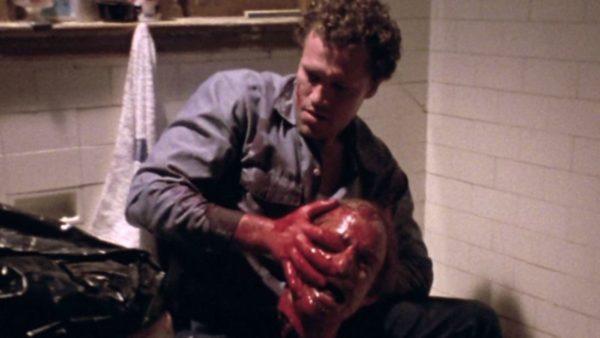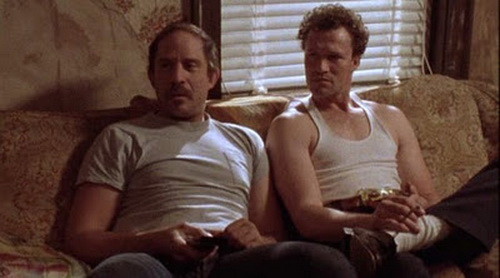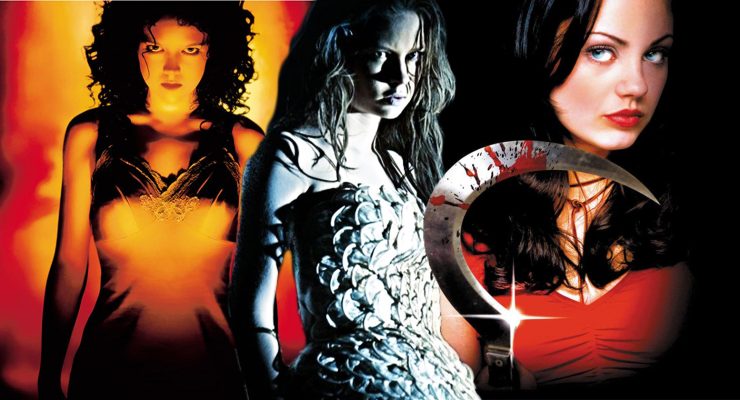Henry: Portrait of a Serial Killer, 1986.
Directed by John McNaughton.
Starring Michael Rooker, Tom Towles and Tracy Arnold.
Filmed in a documentary style, Henry : Portrait of Serial Killer (1986) would cause serious problems for the British Board of Film Classification due to its cold attitude towards violence and sexual violence. Originally made in 1986 but submitted to the BBFC in 1990, Henry was loosely based on the exploits of real life mass murderer Henry Lee Lucas.
The film begins with a montage of Henry’s victims with their screams heard on the soundtrack. Henry (Michael Rooker) has been released from jail and has taken up a regular working class job. He soon meets up with his old friend Otis (Tom Towles) and Otis’s sister Becky (Tracy Arnold). Henry begins to bond with Becky as he appears to respect her whilst Otis frequently belittles her and even attempts to molest her. Otis is then introduced to serial killing by Henry when they pick up a couple of prostitutes who have their necks broken by Henry. Henry then dumps their bodies into a rubbish bin. Later the pair kill a television salesman and steal from him a television and video camera.
The film’s most shocking sequence is when Henry and Otis videotape themselves butchering an entire family. Arriving home late one night, Henry finds Otis attempting to rape Becky but Henry intervenes and kills Otis after Becky has stabbed Otis in the eye with a comb. Henry takes Otis’s body into the bathroom and dismembers it and puts it into plastic bags. Henry and Becky then go on the road together. Henry dumps Otis’s body parts into a river and he and Becky then stay the night in a motel. In the morning Henry is driving alone, he stops the car and takes out a large suitcase and dumps it onto the side of the road and drives off. It is obvious he has disposed of Becky in a similar fashion to Otis.
The videotaped massacre of the family caused serious consternation for censor James Ferman. The scene begins with a woman struggling with Otis whilst Henry films them. By Henry’s feet, a man is seen bound and gagged. A boy enters the room and sees what is going on and attempts to run, Henry puts the camera down and grabs the boy, throws him to the floor and snaps his neck. Otis then snaps the neck of the woman he is holding and molests her dead body. All of this is captured by the camera. In the next shot it becomes obvious that Henry and Otis are actually watching this event on their TV. This scene was cut by just over a minute for the film’s cinema release.
Unhappy with its potentially titillating sexual violence, Ferman had this scene cut by a further 52 seconds for its video release after discussing its potentially adverse effects with psychiatrists. This scene was also reedited so the shot of Henry and Otis watching the TV appeared earlier in the sequence so the neck breaks occurred off camera. This inadvertently lessened the impact of the scene considerably as it was meant to surprise the audience when they realized they were watching a video recording. Ferman then released this version onto video in 1991 with an 18 certificate. Under the new BBFC guidelines of 2000, the film was eventually re-released in its original uncut form onto video/DVD in 2003. This version also included a scene from the opening montage which was originally cut by the film’s distributors. It featured the body of a half naked woman slumped on a toilet with a broken bottle in her face.
Henry is still a very shocking film but a deeply moralistic one. The film maintains a sombre tone throughout with a very eerie soundtrack. The documentary style is very skillfully deployed. The acting by the principles is very natural and they are all very ordinary looking which is what serial killers actually look like. Ferman’s reasons for cutting the film were confusing as the film never glorified any of its violent scenes and simply appeared to be censored for being too bleak and realistic.
Santosh Sandhu graduated with a Masters degree in film from the University of Bedfordshire and wrote the short film ‘The Volunteers’.














